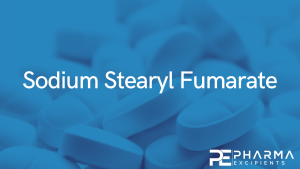Continuous downstream processing of milled electrospun fibers to tablets monitored by near-infrared and Raman spectroscopy

Electrospinning is a technology for manufacture of nano- and micro-sized fibers, which can enhance the dissolution properties of poorly water-soluble drugs. Tableting of electrospun fibers have been demonstrated in several studies, however, continuous manufacturing of tablets have not been realized yet. This research presents the first integrated continuous processing of milled drug-loaded electrospun materials to tablet form supplemented by process analytical tools for monitoring the active pharmaceutical ingredient (API) content.
Highlights
Continuous feeding, blending and tableting of electrospun fibers was accomplished.
In-line monitoring of the amorphous solid dispersion content was performed.
The prepared tablets passed the USP <905> content uniformity test.
Continuous manufacturing of milled electrospun materials to tablets proved feasible.
Electrospun fibers of an amorphous solid dispersion (ASD) of itraconazole and poly(vinylpyrrolidone-co-vinyl acetate) were produced using high speed electrospinning and afterwards milled. The milled fibers with an average fiber diameter of 1.6 ± 0.9 µm were continuously fed with a vibratory feeder into a twin-screw blender, which was integrated with a tableting machine to prepare tablets with ∼ 10 kN compression force. The blend of fibers and excipients leaving the continuous blender was characterized with a bulk density of 0.43 g/cm3 and proved to be suitable for direct tablet compression.
The ASD content, and thus the API content was determined in-line before tableting and at-line after tableting using near-infrared and Raman spectroscopy. The prepared tablets fulfilled the USP <905> content uniformity requirement based on the API content of ten randomly selected tablets. This work highlights that combining the advantages of electrospinning (e.g. less solvent, fast and gentle drying, low energy consumption, and amorphous products with high specific surface area) and the continuous technologies opens a new and effective way in the field of manufacturing of the poorly water-soluble APIs.
Download the full article as a PDF here or read it here
More about microcrystalline cellulose
Materials: Itraconazole (ITR) and vinylpyrrolidone-vinyl acetate 6:4 copolymer (PVPVA64) were obtained from Janssen Pharmaceutica (Beerse, Belgium). Microcrystalline cellulose (Vivapur® 200) and sodium stearyl fumarate (Pruv®) were received from JRS Pharma (Rosenberg, Germany). Mannitol (Pearlitol® 400DC) was a kind gift from Roquette Pharma (Lestrem, France). Crosslinked polyvinylpyrrolidone (Kollidon® CL) was given by BASF (Ludwigshafen, Germany). Aerosil® 200 was supplied from Evonik Industries (Essen, Germany). Reagent grade dichloromethane and ethanol were purchased from Merck Ltd. (Budapest, Hungary).
Article information: Edina Szabó, Petra Záhonyi, Martin Gyürkés, Brigitta Nagy, Dorián L. Galata, Lajos Madarász, Edit Hirsch, Attila Farkas, Sune K. Andersen, Tamás Vígh, Geert Verreck, István Csontos, György Marosi, Zsombor K. Nagy. Continuous downstream processing of milled electrospun fibers to tablets monitored by near-infrared and Raman spectroscopy, European Journal of Pharmaceutical Sciences, 2021. https://doi.org/10.1016/j.ejps.2021.105907.
Read more on Sodium Stearyl Fumarate as a pharmaceutical excipient here:


